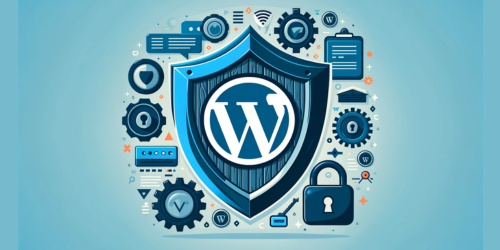Have you ever pondered the intricacies of installing WordPress on a Linux system via the command line? It’s a question that, while niche, is of paramount importance in the world of web development and hosting. This article isn’t just a run-of-the-mill guide; it’s a deep dive into the art and science of setting up WordPress in the Linux environment. We’ll traverse the landscape of hosting options, tackle the LAMP stack setup, and demystify the process of managing WordPress through the command line. Whether you’re a seasoned developer or a curious beginner, this guide promises to enlighten and equip you with the skills to master WordPress installation on Linux.
1. Choosing a Hosting Service for WordPress on Linux
Navigating the realm of hosting services for WordPress on Linux can feel akin to exploring a dense forest. Three primary paths lie ahead: Virtual Private Servers (VPS), Shared Hosting, and Dedicated Servers. Each offers distinct advantages tailored to diverse WordPress needs. VPS, like DigitalOcean, provides a balance of control and affordability, ideal for those with moderate traffic and technical know-how. Shared Hosting, seen in providers like Bluehost, is a budget-friendly choice for beginners, though it may lack the robustness for high-traffic sites. Dedicated Servers, such as those offered by HostGator, while costly, deliver unparalleled power and control, suitable for heavily trafficked and resource-intensive WordPress sites. Get more insights into WordPress Hosting Sites.
2. Essential Prerequisites for Installing WordPress on Linux
Before embarking on your WordPress installation journey on Linux, a foundational understanding of the Linux command line is indispensable. The command line is your map through the Linux landscape, enabling you to navigate and manipulate the server environment. A basic proficiency in text editors like Vim, accessible through Vim’s official page, is equally crucial. Vim, with its powerful and efficient editing capabilities, is a staple in the Linux ecosystem, aiding in editing configuration files and scripts that are part and parcel of setting up WordPress.
3. Installing and Configuring LAMP Stack on Linux
The LAMP stack – Linux, Apache, MySQL/MariaDB, and PHP – forms the bedrock of a WordPress environment on Linux. First, select a Linux distribution; popular choices include Ubuntu and Debian. Next, install Apache, the web server that handles requests and serves your WordPress content. Apache’s configuration can be further explored on the Apache official site. MySQL or MariaDB, your database management systems, store WordPress data, and are detailed at MySQL and MariaDB. Finally, PHP, the scripting language WordPress is built on, needs to be installed and configured, with guidance available on PHP’s official documentation.
4. Downloading and Extracting WordPress Files
To install WordPress, begin by downloading the latest WordPress package. This can be done using the wget command: wget https://wordpress.org/latest.tar.gz. Once downloaded, extract the files using tar -xzvf latest.tar.gz. This command unpacks WordPress into a directory named “wordpress” in your current directory. Move these files to your web server’s root directory, typically found at /var/www/html/, using a command like sudo rsync -av wordpress/* /var/www/html/ This stage sets the stage for configuring WordPress to your unique server environment.
5. Installing WordPress on Linux
Installing WordPress on Linux is a sequential process that combines both technical precision and a bit of digital craftsmanship. After placing the WordPress files in the server’s root directory, as previously mentioned, the next pivotal step is configuring the wp-config.php file. Begin by renaming the sample configuration file: sudo mv wp-config-sample.php wp-config.php.
Next, edit this file to input your database details, including name, username, and password, ensuring they match those you set up in MySQL. With the database details correctly inserted, navigate to your website’s domain in a web browser. This action triggers the WordPress installation script, guiding you through the final setup steps. For an in-depth guide, visit WordPress’s Linux Install.
6. Installing and Using WP-CLI for WordPress Management
The WordPress Command Line Interface (WP-CLI) is an exceptionally powerful tool, streamlining WordPress management tasks. To install WP-CLI, download the Phar file: curl -O https://raw.githubusercontent.com/wp-cli/builds/gh-pages/phar/wp-cli.phar. Next, make the file executable and move it to a directory in your PATH: chmod +x wp-cli.phar && sudo mv wp-cli.phar /usr/local/bin/wp.
Verify the installation with wp --info. WP-CLI opens a world of possibilities: updating WordPress, managing themes and plugins, and much more, directly from the command line. Discover the full extent of WP-CLI’s capabilities at WP-CLI Commands.
7. Managing WordPress via Command Line
Command line management of WordPress brings efficiency and precision to site administration. Key tasks include updating WordPress (wp core update), managing plugins (wp plugin list, wp plugin activate, and wp plugin update), and controlling themes (wp theme install and wp theme activate).
For troubleshooting, clearing the cache (wp cache flush) can often resolve issues. Regular maintenance, like database optimization (wp db optimize), ensures smooth operation. Delve into these commands and more for effective WordPress management at WP-CLI Handbook.
8. Conclusion
Installing and managing WordPress on Linux, though initially daunting, offers unparalleled control and customization. The LAMP stack installation lays a solid foundation, while WP-CLI brings a powerful suite of tools to your fingertips. By mastering these steps, you unlock the full potential of WordPress, ensuring a robust, flexible, and efficient website. This journey not only enhances your technical skills but also empowers you to create and manage WordPress sites with confidence and proficiency.
9. Frequently Asked Questions
Q: Where is WordPress located in Linux?
In Linux, WordPress files are typically located in the /var/www/html directory if you’re using Apache as the web server. For more insights Delve into WordPress installation on Linux.
Q: How do I find my WordPress installation path?
To find your WordPress installation path in Linux, check the web server’s document root, usually /var/www/html for Apache or /usr/share/nginx/html for Nginx.
Q: Where is the WP-config file in Linux?
The wp-config.php file in Linux is located in the root directory of your WordPress installation, often found at /var/www/html/wp-config.php.
Q: How to install WordPress in Linux command line?
To install WordPress via Linux command line:
- Install LAMP (Linux, Apache, MySQL, PHP) stack.
- Create a MySQL database for WordPress.
- Download WordPress using
wgetand extract to the web server’s document root. - Configure
wp-config.phpwith database details. - Complete installation through the WordPress web interface.



